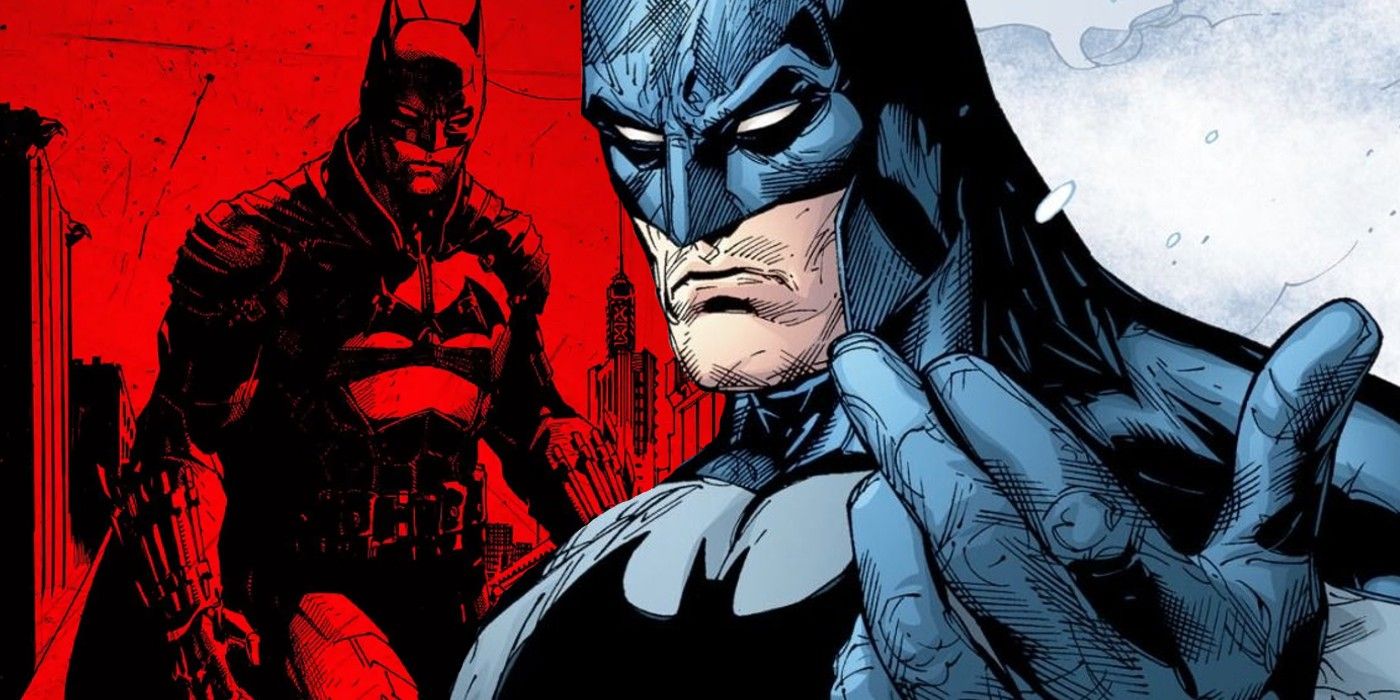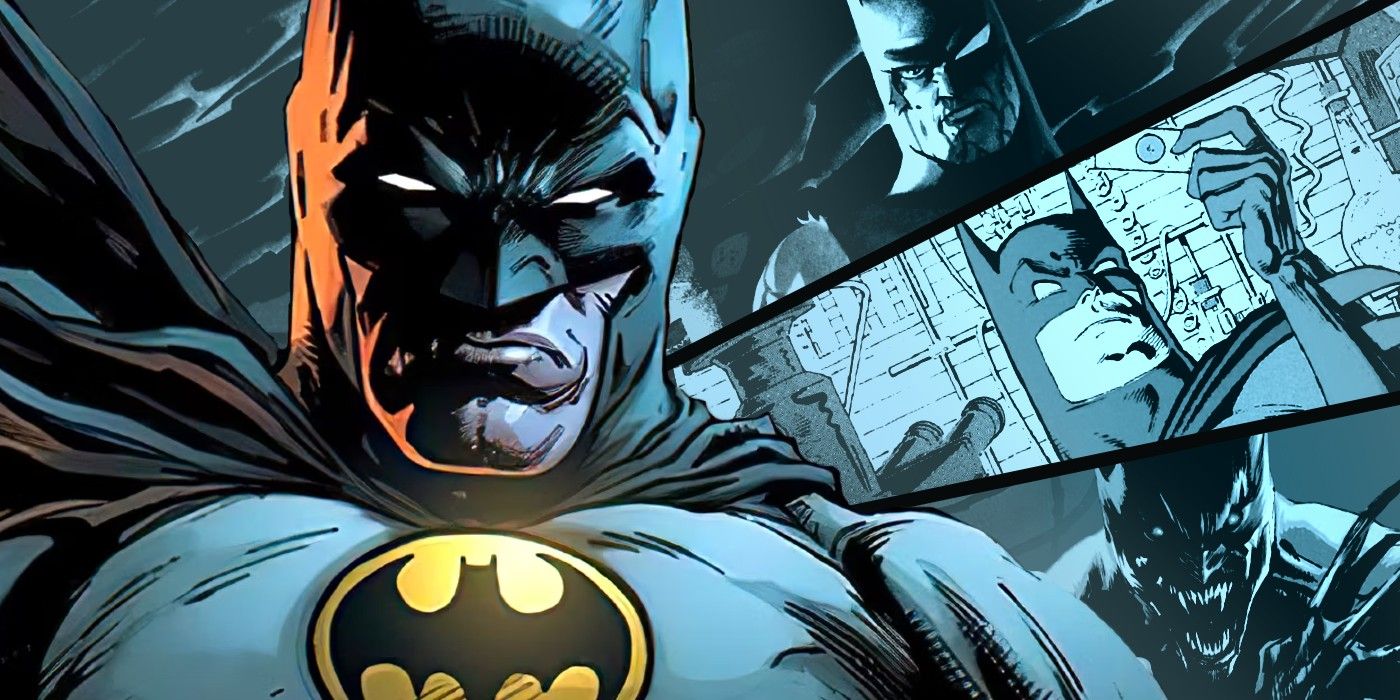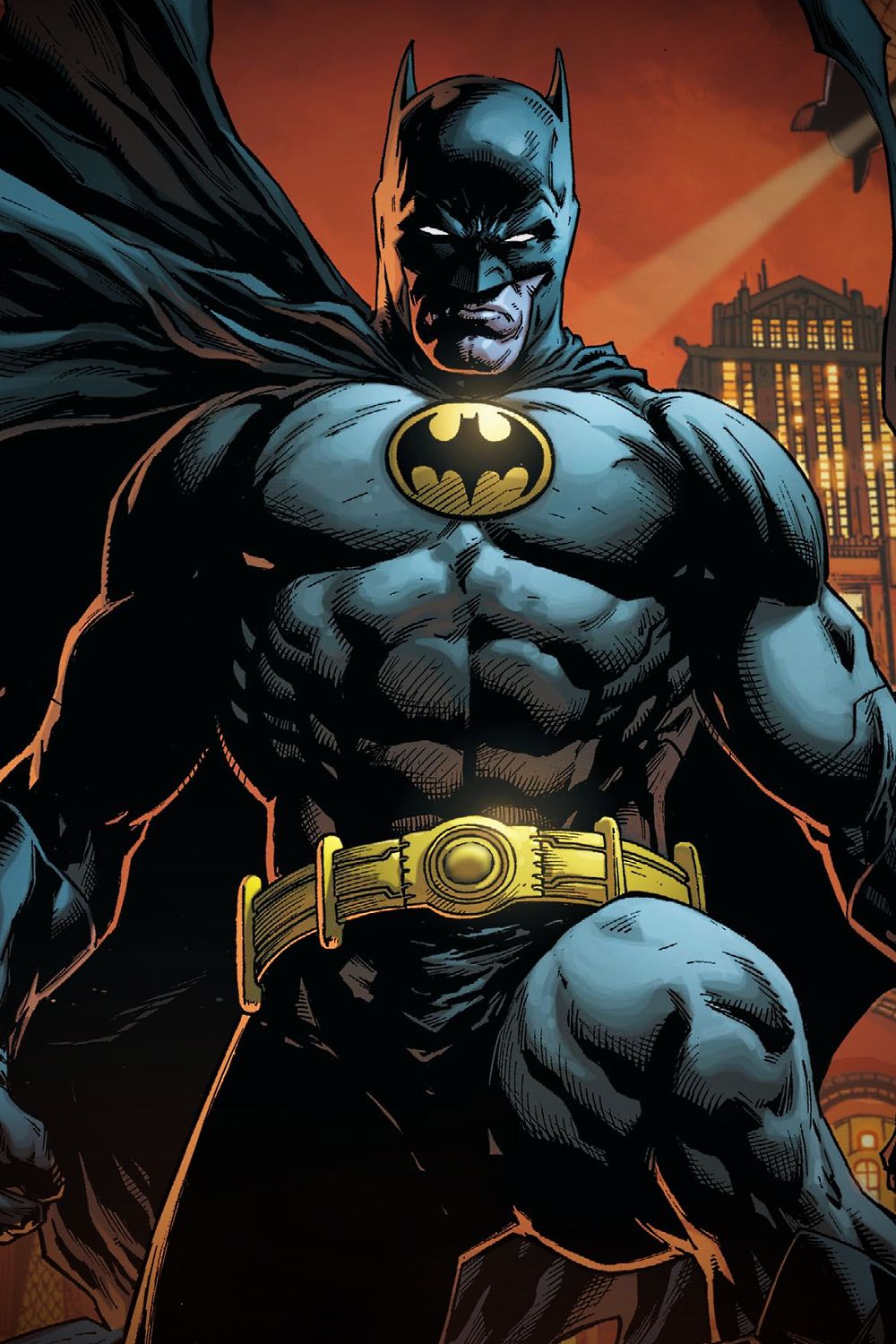Summary
- Batman’s iconic stories showcase his never-ending battle against crime, his alliances, and his complex character evolution.
- “Tower of Babel,” “Hush,” and “Year One” are standout works that exemplify Batman’s psychological depth and gripping storytelling.
- From his origins to modern reinventions, Batman’s adventures continue to captivate fans with dark, impactful narratives and intricate character dynamics.
For more almost eighty years, Batman has stood as one of the most recognizable and successful comic book characters in the medium. Bruce Wayne has an endless library of adventures ranging from psychological horror to murder mysteries, even captivating fans of the darker side of comics. And that ability is reflected in his best comic stories.
Batman’s extensive case files have documented his never-ending war on organized crime, his origin story, and his alliances as he defends his city from violence and chaos. From his Golden Age introduction to his latest battle against the likes of Failsafe, readers have flocked to Batman for the best storytelling and talent in the industry. However, some of the Caped Crusader’s tales stand out ahead of the rest, and represent the very best of Batman stories, and the potential of The Dark Knight and his surrounding characters.
15 JLA: Tower of Babel (2000)
Mark Waid, Howard Porter and Drew Geraci
“Tower of Babel” follows the Justice League as they’re thrown into disarray by Ra’s al Ghul, who steals Batman’s secret contingency plans against his fellow heroes. Deploying these to great effect, the Demon’s Head successfully immobilizes his rivals, even driving The Dark Knight over the edge by stealing the corpses of his parents from their graves.
Although technically a Justice League arc, “Tower of Babel” has been hugely influential on Batman’s characterization in years since. While the character had always been written as having a scheming, secretive streak to him, as seen in his formation of the Outsiders, this took it to new heights. From his secret probing of the Dark Multiverse to his creation of the Brother Eye satellite, all of his modern “contingency plan” stories have built from this JLA arc.
14 Batman vs Ra’s al Ghul (2019)
Neal Adams
Batman vs Ra’s al Ghul follows Ra’s al Ghul in his latest attempt to destabilize Gotham City, using a series of terrorist attacks to position himself to infiltrate the city from within. Deploying an impostor Batman to tarnish The Dark Knight’s good name, the villain almost brings the city to its knees, forcing a confrontation with the World’s Greatest Detective. Taking on an almost psychedelic tone at times, the miniseries showcases the unique storytelling of Neal Adams.
As a comic both written and drawn by Neal Adams, Batman vs Ra’s al Ghul achieves two feats in one: Not only was it the final story of a comic book legend, but also a spiritual conclusion to arguably the greatest creative run in Dark Knight history. A sequel to Adams’ 2018 Deadman miniseries, this comic combines a mystical and psychological mystery with one of Bruce Wayne’s greatest rivalries.
Related
Batman’s ABSOLUTE Redesign Is the Gnarliest Dark Knight of All Time & New Art Proves It
Move over, Frank Miller: Batman is getting his grittiest retelling yet with new variant art that promises the darkest version of the Dark Knight.
13 Batman: Dark Moon Rising (2006)
Matt Wagner
In 2005, Matt Wagner kicked off his “Dark Moon Rising” story, beginning with Batman and the Monster Men and concluding in 2006’s Batman and the Mad Monk. The first story follows the hero going up against his first villain, Hugo Strange, and his hulking monster men. After conducting genetic experiments on these men, Strange loses control, and the creatures run amok in Gotham City. Shortly after, Wagner returned to The Dark Knight in “The Mad Monk,” which follows the vampiric leader of a cult, who abduct Gothamites for their rituals.
While it technically refers to two different miniseries, “Dark Moon Rising” combines Matt Wagner’s tenure on Batman, modernizing two classic Golden Age comics in a longer format. Through his unique storytelling, Wagner delivers some of the best, darkest and most underrated Batman series in DC history.
12 Batman: Hush (2002)
Jeph Loeb and Jim Lee
“Batman: Hush” follows The Dark Knight as he’s targeted in Gotham by a mysterious new villain, the bandaged figure known as Hush. Realizing that a mastermind is orchestrating a slew of attacks by his classic rogues gallery, the hero sets out to find the culprit, as Bruce Wayne rebuilds a friendship with his childhood friend, Thomas Elliot.
“Hush” delivered modern readers a fresh entry point to the world of Batman, serving as much as a tour of Gotham and its villains as a compelling mystery. Not only does the story deliver a fan-favorite fight between the Caped Crusader and Superman, but it also delves into the Bat/Cat romance, not to mention a great depiction of Riddler as the mastermind that he is.
11 Batman #232: “Daughter of the Demon” (1971)
Dennis O’Neil, Neal Adams and Dick Giordano
Batman #232 begins when, after a night fighting crime, Robin is kidnapped by gunmen. Shortly after, Ra’s al Ghul makes his debut, demanding a team-up with The Dark Knight to find both Dick Grayson and his daughter, Talia. On a globe-trotting adventure that takes them on a perilous path through treacherous mountains to find their loved ones. After finally finding refuge in the caves, the hero realizes he’s been had — and the Al Ghuls are more sinister than he realized.
“Daughter of the Demon” is best enjoyed alongside stories like “Into the Den of the Death-Dealers” and “The Demon Lives Again,” building up an Al Ghul-centric saga. As one of Batman’s greatest foes, this introduction remains one of the best Bronze Age stories of all time, opening the door to the Demon’s Head’s search for a worthy successor.
10 Batman: The Man Who Laughs (2005)
Ed Brubaker, Doug Mahnke
In Batman #1 (by Bob Kane & Bill Finger), readers were introduced to Joker as he went on a crime spree, murdering wealthy Gothamites and stealing their jewels. Under Ed Brubaker and Doug Mahnke, the story was reimagined, spinning a relatively short tale into a murder mystery graphic novel exploring Batman’s first encounter with the villain.
Batman: The Man Who Laughs is a great look at the relationship between Batman and Joker, while also delivering a solid retelling of the original tale. While there’s no mystery to the story, as readers already have a good understanding of the villain, it does serve as a modern origin for their rivalry. In addition, it showcases the hero’s strengths as a detective as he learns of Joker’s endgame and outsmarts his new nemesis.
This reimagining was named for
The Man Who Laughs
(1928), starring Conrad Veidt as the permanently dsfigured ‘Gwynplaine’ who would provide inspiration for the iconic DC supervilliain.

Related
20 Best Batman Quotes That Prove He’s DC’s Most Hardcore Hero
Batman’s adventures reveal how much of a wordsmith the Dark Knight really is. See 20 quotes from Batman that embody the core of DC’s iconic character.
9 Batman: White Knight (2019)
Sean Murphy, Matt Hollingsworth
While Batman’s core series house some of his best tales, it’s actually through DC’s various Elseworlds books where the hero has been given some of his best stories. In 2017, Sean Gordon Murphy turned in an instant modern classic: Batman: White Knight. In this continuity, an increasingly brutal Batman restores Joker’s sanity when he force-feeds him psychotropic drugs, allowing the personality of “Jack Napier” to reassert itself. In response, the now level-headed Gothamite declares a run for public office — running on a platform to bring down the Dark Knight.
Batman: White Knight and its sequels offer a new look at the ethics behind the Dark Knight and his impact on the city, specifically his psychological relationship with Joker. The story keeps readers hooked by the prospect of the Clown Prince of Crime returning to the surface, with an incarcerated Batman leaving Gothamites to wonder about the future of their city. The series and its continuity reimagines a variety of characters, such as Duke Thomas, and doubles up as a fun political thriller as well as a Batman story. With Sean Murphy handling both story and art, it’s one of the most visually-stunning stories in the hero’s history.
8 Batman: No Man’s Land (1999)
Bob Gale, Dennis O’Neil, Greg Rucka, Devin Grayson, Ian Edginton, Alex Maleev, Roger Robinson, Dale Eaglesham, Frank Teran, Jason Pearson, Jon Bogdanove, Phil Winslade
The “No Man’s Land” event takes place in the aftermath of a devastating earthquake in Gotham, one that leaves the city in a state of lawless disarray. Naturally, Batman steps in to aid the effort to restore law and order. With his rogues gallery carving up the territory, taking a piece for themselves and establishing their own small empires. The story also focuses on other characters and how they deal with the events, some assisting in the recovery efforts while others struggle to stay alive in the eye of the storm.
“No Man’s Land” combines genres like disaster, neo-Western, dystopia and the typical action-packed stories associated with the Dark Knight. Here, Batman serves as a sheriff-like figure, dispensing justice amidst the chaos, and helping the government slowly take the city back, one piece at a time. For readers who want to see what would happen in a Gotham without a functioning state, this is their best story.
7 Flashpoint Beyond (2022)
Jeremy Adams, Geoff Johns, Tim Sheridan, Xermanico
Flashpoint Beyond picks up on the story of Thomas Wayne after being seemingly killed by Darkseid in Justice League Incarnate #4 (Joshua Williamson, Dennis Culver, Chris Burnham & Andrei Bressan). Now back in the Flashpoint timeline and the only person there who recalls its destruction, the antihero takes on the case of the Clockwork Killer, a serial killer whose trail leads Thomas around the world. Things get complicated when he takes in the orphaned son of Harvey Dent, Dexter, who turns to the idea of vigilantism. At the same time, Bruce is sent down a rabbit hole of his own on his world as he learns of the fate of the Flashpoint universe.
Flashpoint Beyond is a brilliant exploration of the titular timeline, one that revisits ideas like Flashpoint Superman and Martha Wayne as Joker. The series manages to take the Batman mythos and somehow make every element of it even darker and more twisted. Even so, it leaves readers on a hopeful note as Thomas is able to overcome his nihilism and find some good in the world.
6 Batman: The Court of Owls (2011)
Scott Snyder, Greg Capullo, Jonathan Glapion
In 2011, DC Comics rebooted their New 52 universe, allowing new creative teams to explore fresh origins and stories for their heroes. One of the best of these was the pairing of Scott Snyder and Greg Capullo on Batman, beginning with their “Court of Owls” story. This debut arc introduces a secretive organization of elite Gothamites, who are revealed to have orchestrated the city’s trajectory from the shadows. With deadly assassins known as Talons to do their dirty work, the group approaches Bruce Wayne to become their latest member — leading to a showdown with Batman.
As great as Scott Snyder’s story is, it’s Greg Capullo’s art that makes “The Court of Owls” an undeniable classic, with it remaining one of the best-drawn comics of its era. The story was a great combination of conspiracy thriller, psychological horror and action story, one that climaxes with Bruce stepping into a mech suit to fight his new enemy.

Related
Batman Begins: A Beginner’s Guide To Batman Comics (Best Reading Order)
With over 80 years of Batman comics to navigate, finding the right one can be tricky–so we created a guide to the best of the best.
5 Batman: Knightfall (1993)
Chuck Dixon, Doug Moench, Alan Grant, Graham Nolan, Jim Aparo, Norm Breyfogle
Shortly after the creation of Bane in his solo graphic novel, Vengeance of Bane, the villain resurfaced in Gotham City,intent on ‘breaking the Bat’ and taking the city for himself. Fuelled by a combination of jealousy and injustice, Bane orchestrates a breakout from Arkham Asylum, throwing the city into a frenzy. With the likes of Victor Zsasz, Firefly, Joker and Mad Hatter running amok, The Dark Knight springs into action. Running on minimal sleep and exhausted by his days-long effort to round up the villains, Bruce finally comes face to face with his new nemesis in Wayne Manor.
“Knightfall” is a brilliant story because it highlights just how dedicated Batman is to his city, fighting for its citizens until it broke him. It also showed Bane to be the villain the hero needed, someone who had the intellect, physical strength and resolve to challenge him. With Azrael taking on the cape and cowl, the story also serves as a reminder of the importance of the Caped Crusader’s symbol, reminding readers there’s more to the Bat than just violence. While the entire saga, concluding with Bruce’s return in “Knightsend,” is worth a read, “Knightfall” alone stands out as one of the best events of the 1990s.
4 Batman: The Cult (1988)
Jim Starlin, Bernie Wrightson
Batman: The Cult casts The Dark Knight in a tale of psychological terror as he is captured by a cult of homeless Gothamites, the Underworlders, led by Deacon Joseph Blackfire. After succumbing to the fanatic’s mental reconditioning, Batman becomes an accessory to their crimes, aiding in the murder of the city’s criminals, whom Blackfire wishes to eradicate. When he is able to regain his faculties, the hero recovers and takes the fight to the cult.
Batman: the Cult is a gripping psychological thriller, one that explores cult of personality, religious fanaticism and tests the resilience of Bruce Wayne. For readers who prefer a more grounded, street-level Caped Crusader, Starlin and Wrightson’s story is as good as it gets. When the hero returns for his final showdown, readers are shown how his resolve stands up to the will of a cult leader.
3 Batman: Year One (1987)
Frank Miller, David Mazzucchelli, Richmond Lewis
Frank Miller’s Batman: Year One tells the story of Bruce Wayne’s origin as Batman, leading readers from the death of his parents to his decision to don the cape and cowl. Heading out as a newbie crime-fighter, the hero becomes embroiled in a war against the city’s organized crime element, while also crossing paths with Catwoman. At the same time, a newly-transferred Jim Gordon reckons with the deep-rooted corruption that has infested the GCPD.
Batman: Year One is a great entry point for new readers to get invested in the Batman mythos, introducing some of his most vital supporting characters and explaining his motivations perfectly. The story also captures the character of Gotham City itself, delving into the influence of the city’s mob families and building up Jim Gordon as the story’s best character.
2 Batman: The Long Halloween (1996)
Jeph Loeb, Tim Sale, Gregory Wright
Batman: The Long Halloween tells the story of Bruce Wayne near the start of his career as he’s tasked with finding a serial killer, who targets his victims on holidays. At the same time, the Dark Knight forms an alliance with Jim Gordon and district attorney Harvey Dent, working hand in glove to find the killer and bring down the mob. When they realize the two are directly connected, this leads the hero to his answer — but not without tragedy befalling the characters.
Batman: The Long Halloween and its sequel, Dark Victory, give Batman a compelling murder mystery plot, one that brings out the best in him as a detective. Together, Loeb and Sale crafted one of the most influential and definitive tales in Dark Knight history, one that has served as the basis for numerous on-screen adaptations. The series doesn’t simply give the hero a great case to solve, it serves as a tour of Gotham itself, with each of his best enemies having a moment in the sun.
1 Batman: The Dark Knight Returns (1986)
Frank Miller, Klaus Janson, Lynn Varley
The Dark Knight Returns takes place in a high-crime, borderline dystopian future, a Gotham City where Batman has retired and a gang of criminals, the Mutants, roam the streets. After getting fed up with the unrestrained violence that has swept his city, a seasoned Bruce Wayne returns to his old mantle and declares war on the Mutants. With the aid of a new Robin, Carrie Kelly, he challenges the gang leader to a showdown. At the same time, newly-appointed GCPD Commissioner Ellen Yindel makes it her top priority to finally bring down the Caped Crusader and restore law and order to the city. To make matters even worse, Joker returns to his violent ways after years in a catatonic state.
The Dark Knight Returns is widely regarded as the definitive Batman story, and for good reason. The series is devoted to exploring why Gotham needs Batman, the importance of meaningful justice in a city and the meaning of the hero’s symbol. With the final battle between Bruce and Superman, the series inverts the classic dynamic between the pair, turning the Bat-symbol into a unifying source of hope. The miniseries actually has its own continuity, with a series of sequels and spin-offs, dubbed “The MillerVerse.” Miller brought a lot to the hero, and his depiction of Bruce remains arguably the best the character has ever known.

Batman
One of DC’s most iconic heroes, Batman is the vigilante superhero persona of billionaire Bruce Wayne. Forged by tragedy with the death of his parents, Bruce dedicated his life to becoming the world’s leading martial artist, detective, and tactician. Recruiting an entire family of allies and sidekicks, Bruce wages war on evil as the dark knight of his hometown, Gotham City.
- Alias
- Bruce Wayne
- Created By
- Bob Kane , Bill Finger





